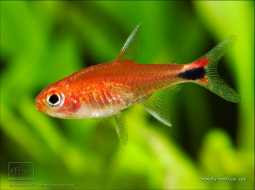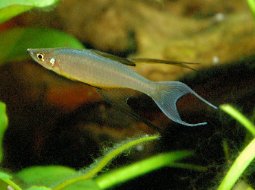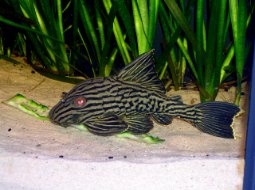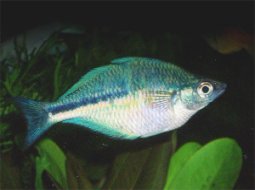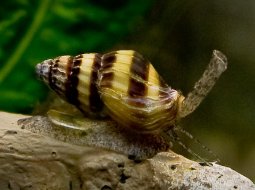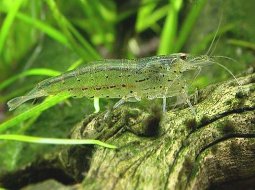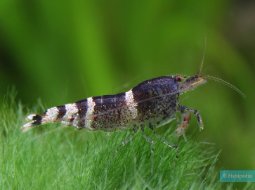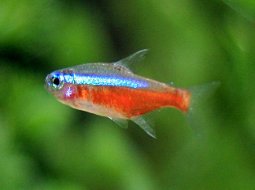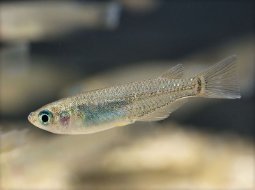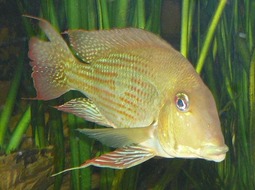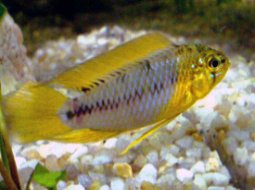
Loading Aqualapp ...
Care and Compatibility of Discus fish - Symphysodon aequifasciatus
Introduction
The Symphysodon aequifasciatus, commonly known as Discus or Discus fish, is a freshwater fish native to the Amazon River basin in South America. Its common name, "Discus," is derived from its round body shape and its graceful and undulating movements. These fish are highly prized in the aquarium hobby for their beautiful colors and unique behavior.
Behavior
Discus fish are known for their calm and peaceful behavior. They are social fish that usually live in groups and form strong family bonds. They prefer to swim slowly and gracefully, often occupying the mid to lower levels of the aquarium. They are sensitive to abrupt changes in their environment and require a well-established and carefully maintained aquarium for their health and well-being.
Sexual Dimorphism
Sexual dimorphism in Symphysodon aequifasciatus is minimal and difficult to distinguish. Both sexes have a similar appearance, but during the breeding season, males may exhibit more pronounced territorial behavior and intense coloration.
Reproduction
Breeding Discus fish can be challenging as they require specific conditions to successfully reproduce. They are mouthbrooders, which means that females deposit eggs on a flat surface, and then the males pick up the eggs in their mouths to incubate them. During this period, it is important to provide them with a quiet and secure environment, along with a protein-rich diet to ensure the healthy growth of the fry.
Aquarium Conditions
Symphysodon aequifasciatus, commonly known as the green discus, is a majestic and colorful fish that requires a large, well-planted aquarium. It prefers warm and soft water with efficient filtration and regular water changes. Providing them with enough space to swim and form social groups is essential.
Feeding
In terms of feeding, Discus fish are omnivorous and have a varied diet in their natural habitat. They primarily feed on small invertebrates, insect larvae, and plant matter. In the aquarium, they can be offered high-quality commercial foods such as pellets and flakes specifically formulated for Discus fish. Live or frozen foods such as mosquito larvae, brine shrimp, and daphnia can also be provided. Maintaining a balanced diet is important to promote their overall health and vitality.
Complexity
Caring for Symphysodon aequifasciatus can be challenging due to its specific water requirements and sensitivity to water quality. They are social fish that require same-species shoaling companions. Additionally, they need a balanced and varied diet to maintain their health and coloration.
In case you need more help, or if you want to know into any topic related to the Symphysodon aequifasciatus (Discus fish) and even any other species you can use the forums to ask what you need.
To do an analysis more detailed about coexistence and behavior of Symphysodon aequifasciatus (Discus fish) use the Aquarium simulation tool, if you do this you can test different ways to combine the Discus fish with other fishes giving the dimensions and space on you aquarium, on this way you can known the optimal configuration for keep the fishes that you want.
You can also find out the 89 species compatible with the Symphysodon aequifasciatus (Discus fish) can live together.
Note: The parameters of the water such as PH and temperature are also used to calculate the compatibility of the species.
Compatible species (89)
Compatible (22 Species)
Compatible without any restriction
Similar Sizes (11 Species)
They can coexist if they are the same size or very similar sizes, it does not work in all cases, there may be exceptions.
With Reservation (11 Species)
Compatible in some cases, it depends on the nature and personality of the fish.
Showdown over territory (1 Species)
Fish can live together as long as the space is spacious enough to delimit a territory, otherwise there may be aggressions for competing for the territory.
Considerable size difference (34 Species)
They can coexist while they are similar in size or the size difference is not very abysmal, since as the fish grows it increases the chances of eating its partner that did not grow much.
Food competition (1 Species)
They can live together but you have to be careful since it is likely that the fastest fish will take all the food and leave nothing for their partners who are slow swimmers, so you have to make sure that everyone can eat.
Compatible if space is enough (9 Species)
They can coexist together if the aquarium they share is large and spacious enough for both species to feel good, as some fish may attack others to feel that they have little space and try to eliminate the competition.
Discus fish
Symphysodon aequifasciatus
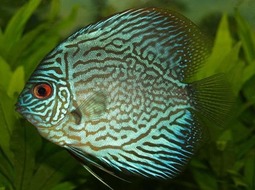
- Ph: 5 - 6.5
- Temperature (c°): 26 - 30
- Measures: 15 cm - 20cm
- Aquarium Capacity:
30 Liters - 8 Gallons - Alimentación: Omnivores
- Colores: Blue, Brown, Green, Orange, Red, Yellow
- Comportamiento: Active, Peaceful, Shoal
- Habitad: American
- Preferencias del Acuario: Natural plants, Rocks, Sand
- Tamaño: Medium
- Taxonomía: Cichlids, Fish
- Tipo de Agua: Sweet water, Tropical waters
- Velocidad de nado o movimiento: Normal
- Zona de Nado: Swim in the middle of the aquarium



.jpg)


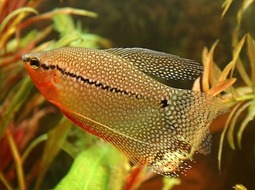



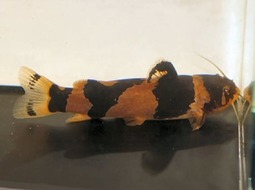

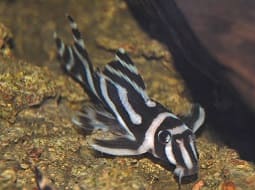


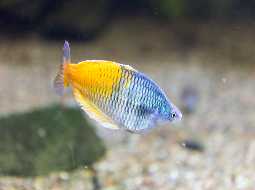

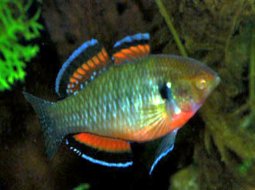
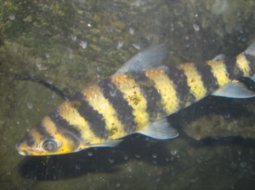

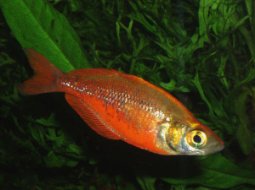

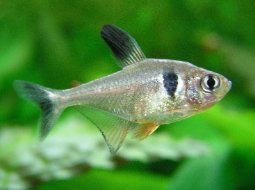
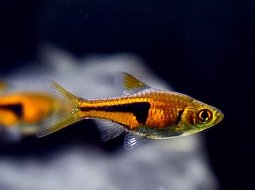






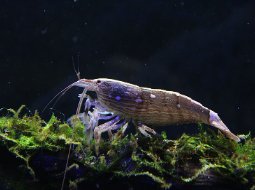

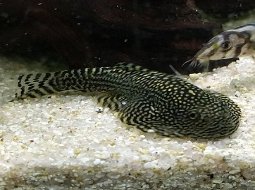
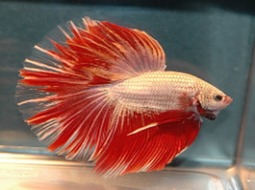
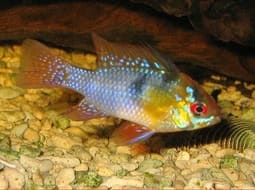


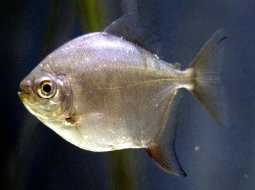
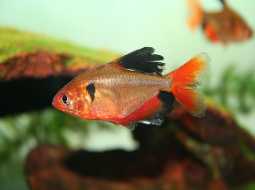
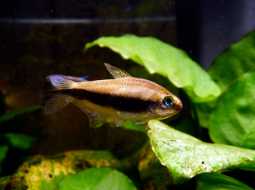
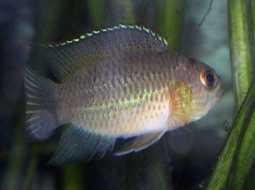
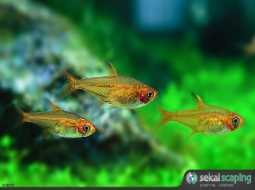
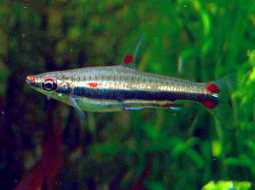

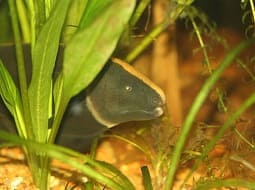
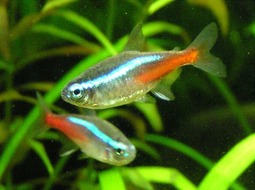
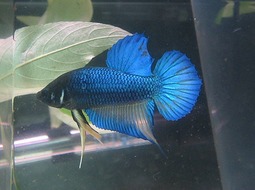

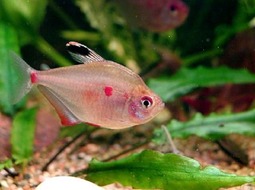
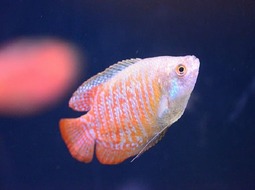

.jpg)

.jpg)




